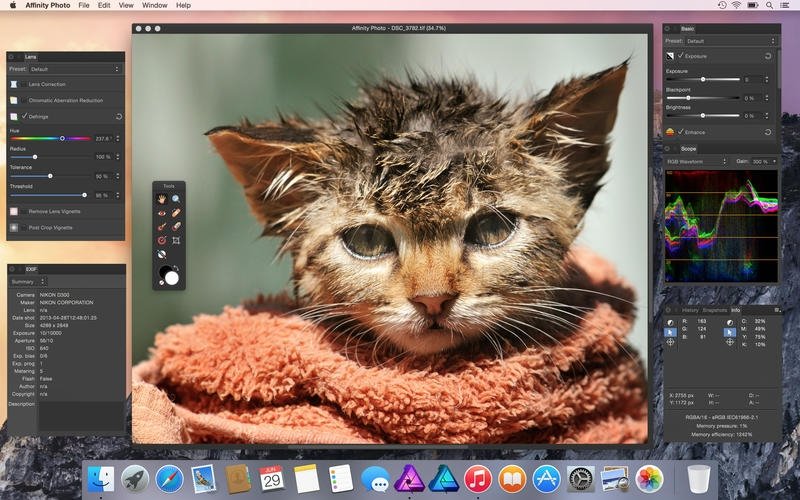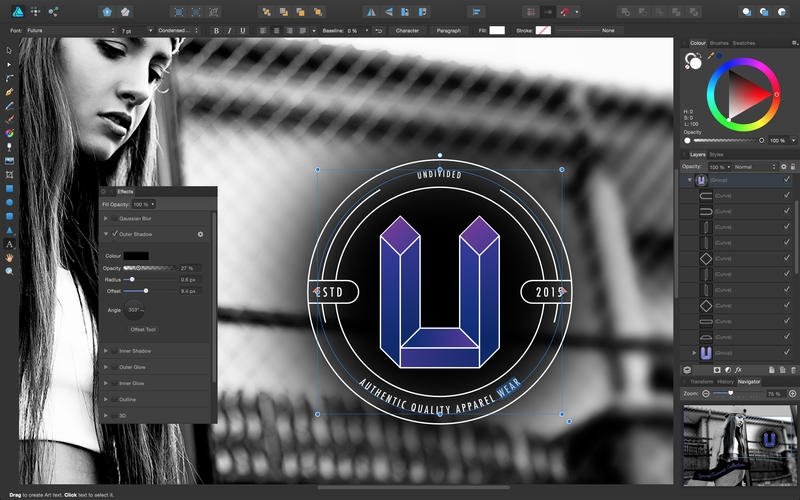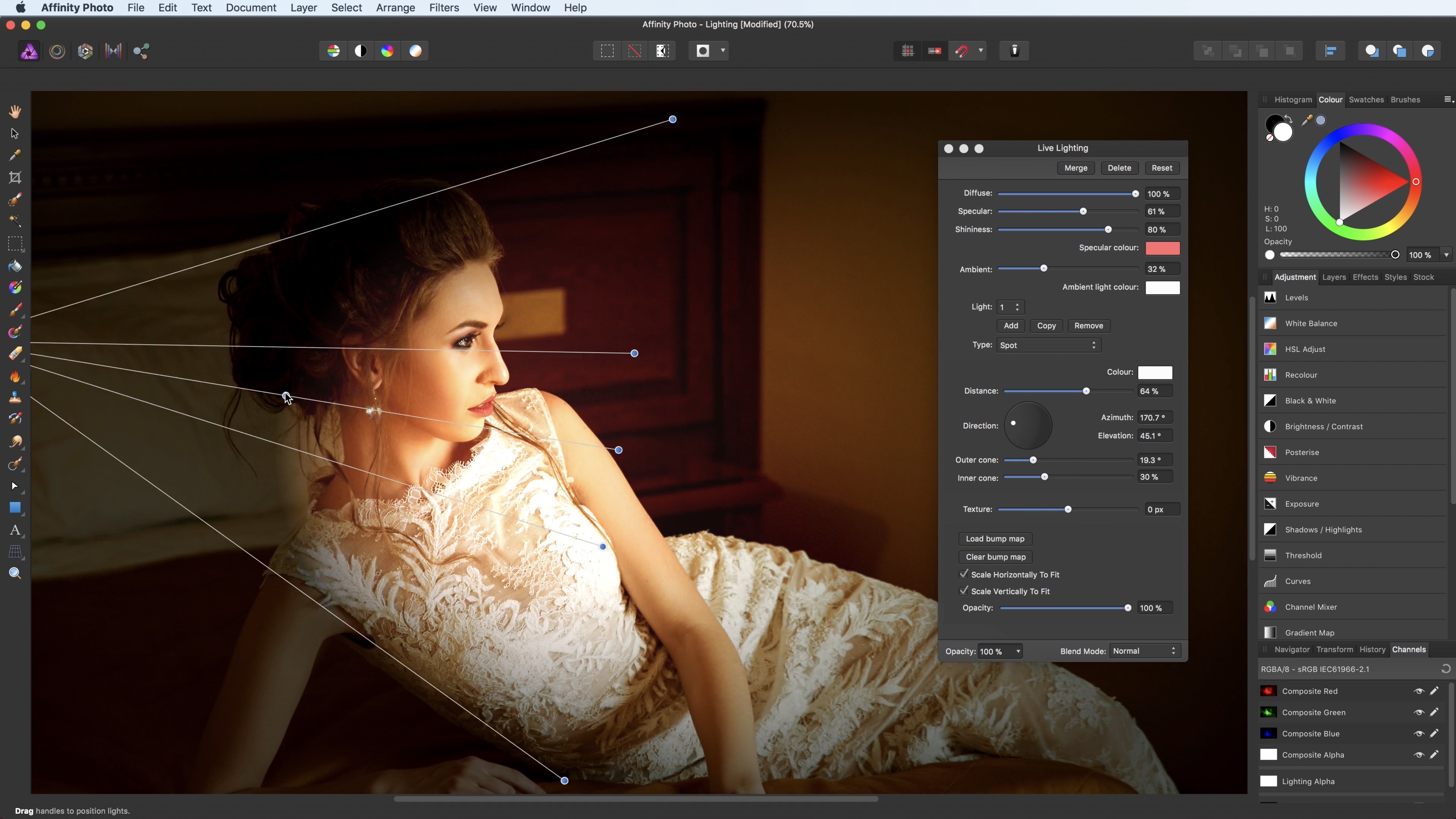

Text labels let me look and easily choose what I want to do, even if I'm using an editor with which I'm not that familiar.Affinity Photo and Affinity Designer 1.7 are here! It's our biggest update yet with GPU compute acceleration, HDR monitor support and a new memory management system to ensure the Affinity suite continues to be at the cutting edge of modern creative software. The fact that Affinity doesn't means it's off my list for consideration (and saved bookmarks).Īctually, I probably couldn't get my head around its use pf PS icons, rather than text-labeled titles for options, as most other editors use. Since my first real understanding of editing was with CNX2, with its ability to go back and easily redo any step, that's how I think sw should work. If you made a lot of changes, like gradient overlays, you’ll need to start over." Did you overcrank the contrast when you imported the raw file? Sorry, you can’t go back into the Develop persona and change just that attribute you’d have to select the pixel layer in the Photo persona, switch to the Develop persona, and then apply a negative contrast value to compensate. "Once you’ve clicked the Develop button, your edits are baked into that pixel layer.

You’ll also find tools for painting and drawing, including extensive controls for creating and manipulating brushes, but for the sake of brevity, I’m looking at the application in terms of editing photos. And lastly, the Export persona provides tools for creating versions of the image outside the application, from specifying file types and compression levels to preset slices. The Tone Mapping persona is exclusive for working with HDR (high dynamic range) effects, which can apply to single images as well as several merged shots. The Develop persona kicks in when opening a raw file for pre-processing, akin to Adobe Camera Raw. The Liquify persona is a playground for distorting areas when retouching (creating an editable mesh of the entire image and then pushing and pulling the pixels to do things like make areas seem slimmer or to correct distortion). The Photo persona is the main editing interface, with adjustments, layers, masks, and the like. These personas include: Photo, Develop, Tone Mapping and Export. Working modes, aka 'Personas'Īffinity Photo is built around four working modes, referred to as “personas,” each of which contains its own specialized tools. If photo editing beyond the basics is new to you, it’s easy to pick up. That said, if you’re already familiar with Adobe’s flagship, it won’t take long to orient yourself in Affinity Photo. How does it perform for photographers? Does it get in the way when handling familiar operations? Does it improve the editing experience? Comparisons to Photoshop inevitably come up, and I’ll refer to them when needed, but this isn’t specifically a comparative review between Affinity Photo and Photoshop.
#Affinity photo for mac tutorial software#
Software should be evaluated on its own merits, and for the most part I’m looking at Affinity Photo through that lens.

Getting StartedĪffinity Photo's personas break up the editing experience into five main categories. You won’t find some of the specialized features Photoshop includes, such as its 3D tools, but most everything else is there – sometimes to Affinity Photo’s detriment. We’re beyond the point where photographers will put up with limited software to save a few bucks, and with Affinity Photo, we don’t have to. However, simply offering a less expensive image editor isn’t enough. If you’re already familiar with Adobe’s flagship, it won’t take long to orient yourself in Affinity Photo.


 0 kommentar(er)
0 kommentar(er)
